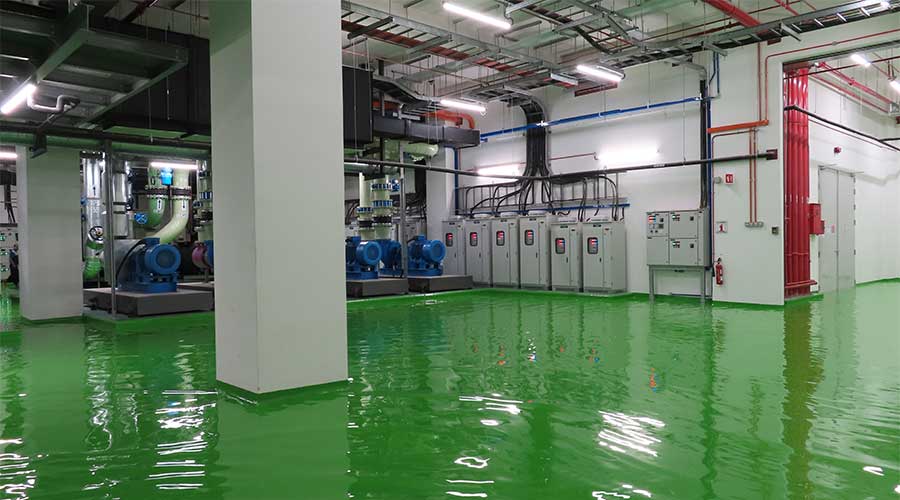Resilience is here to stay. As a priority for facilities, that is.
The process of preparing institutional and commercial facilities to prepare for, respond to and quickly recover from a crisis has been emerging for a decade or so. But with such threats as climate change, wildfires and an unreliable electrical grid growing quickly, facility managers no longer can afford to wait.
Given the complex nature of hospitals and other healthcare facilities’ operations and the vulnerability of patients, the need to embrace resilience is even more urgent for healthcare facilities managers.
Trouble brewing
Resilience has become a higher priority in recent years, according to professionals involved in helping healthcare facilities prepare. They cite the effects of recent wildfires and power outages, as well as hurricanes and flooding that devastated parts of the East Coast.
“After the past two or three years, we have been working with a lot more facilities that are actually not in a floodplain but were flooded because of extreme events, and now they are starting to think about resilience,” says Aditya Bhagath, P.E., associate with Thornton Tomasetti. He adds that the change is an acknowledgement by managers that the future of their organizations is at stake.
“Given that their healthcare facility will be there for a long time to serve the community, if you're designing any measures to mitigate the effects of those extreme levels of precipitation, you have to look at designing for higher levels out into the 2050s or the 2080s.”
One major challenge for many managers is overcoming the stereotypical view of facilities managers and helping organizations understand the critical role of facilities in the organization’s mission.
The facility manager’s “role is unheralded,” says John Friedlander, associate managing director for security risk management with Kroll. “No facility manager ever got a thank you note because the air temperature was just perfect or the water pressure in the bathrooms was ideal. It's an under-thanked position, and it's quick to be castigated. These are challenging roles and even more so in healthcare, where the demands are astronomical and life safety is critical.”
Roles in resilience
In order to improve their organizations’ resilience, it is critical for facility managers to understand how their skills and experiences translate into a successful role as a resilience team member within the organization.
One important first step is to reassess their familiarity with the threats that are likely to create a crisis for the facility.
“The experienced facility manager knows the legacy incidents that have impacted their organization, whether it's their specific hospital or the network of hospitals in their region. It could be ice storms in the Midwest,” Friedlander says. “It could be wildfires in Southern California. It could be labor interruptions in the Northeast.”
With that context in mind, managers next need to understand their role and that of facilities in the organization’s resilience efforts.
“Some of their responsibility is dictated site specifically,” Friedlander says. “Different hospitals or different enterprise health organizations assign different roles and different responsibilities, depending on the size and sprawl of the hospital or the campus. There can't be facility management without significant skin in the game for emergency management, particularly given their resources and their criticality.
“They are the backbone of the hospital. Nothing works if they're not working. It's incumbent on them not only to be prepared, but to be ingrained in the process.”
Because managers involved in resilience will have to work with their organizations’ emergency management department, they need to understand that structure.
"You need to as a facility manager understand the incident command system,” says Randy Braverman, senior consultant with Facility Engineering Associates. “It's important they understand that role, how to manage an emergency, how to deal with first responders coming to your hospital. Making sure they understand those roles is really important to deal with any type of emergency. They have to understand that you have responsibilities for your staff, and that chain of command, what their roles are going to be.”
Communication considerations
Healthcare facilities are complex operations, so increasing their resilience requires strong relationships throughout the organization, as well as in the surrounding community the facility serves. To build these relationships, managers need to rely on their communication skills.
"They need to make sure that they have a good communication program in the building," Braverman says. “No matter what building you have, you have to be able to respond to the emergency and make sure people understand what to do in the emergency, especially with healthcare since we have peoples’ lives at risk.
“They’ve got to make sure that people working there know what to do in an emergency situation to take care of patients. They need to assess the building for hazards and make sure that they work with people who understand those hazards.”
In many cases, the need for effective communication extends beyond the organization to relationships with product dealers and manufacturers.
"Let’s say there is a critical piece of equipment that is serving as life support to a particular patient right in a facility,” Bhagath says. “The facilities manager needs to be able to engage with the manufacturer of the equipment upfront and understand that these are the limitations of that equipment and this is what needs to be in place in order for it to run even when there's a disruption due to a flood event or hurricane, for example.
“Having all those pieces of information upfront helps the facilities managers prepare much better upfront in the process and then disseminate that information to all relevant stakeholders.”
Perhaps the most effective communication for healthcare facilities managers involves helping other key players in their organizations understand the critical nature of resilience, given the growing number of potential threats to facilities, operations, staff and patients. The conversation often comes down to understanding the financially smart decision to invest in resilience instead of paying much more to repair and rebuild.
"Organizations have limitations in terms of how much can be spent,” Bhagath says. “But there have been several studies that have been, and it's been proven that if you spend $1 in mitigation today, you will save up to $4 to $6 in the future.”
Dan Hounsell is senior editor of the facilities market. He has more than 25 years of experience writing about facilities maintenance, engineering and management.

 UF Health Hospitals Rely on Green Globes to Realize Their Full Potential
UF Health Hospitals Rely on Green Globes to Realize Their Full Potential How Healthcare Facilities Can Be Truly Disaster-Resilient
How Healthcare Facilities Can Be Truly Disaster-Resilient TriasMD Breaks Ground on DISC Surgery Center for San Fernando Valley
TriasMD Breaks Ground on DISC Surgery Center for San Fernando Valley Bigfork Valley Hospital Falls Victim to Data Breach
Bigfork Valley Hospital Falls Victim to Data Breach AI-Driven Facilities: Strategic Planning and Cost Management
AI-Driven Facilities: Strategic Planning and Cost Management